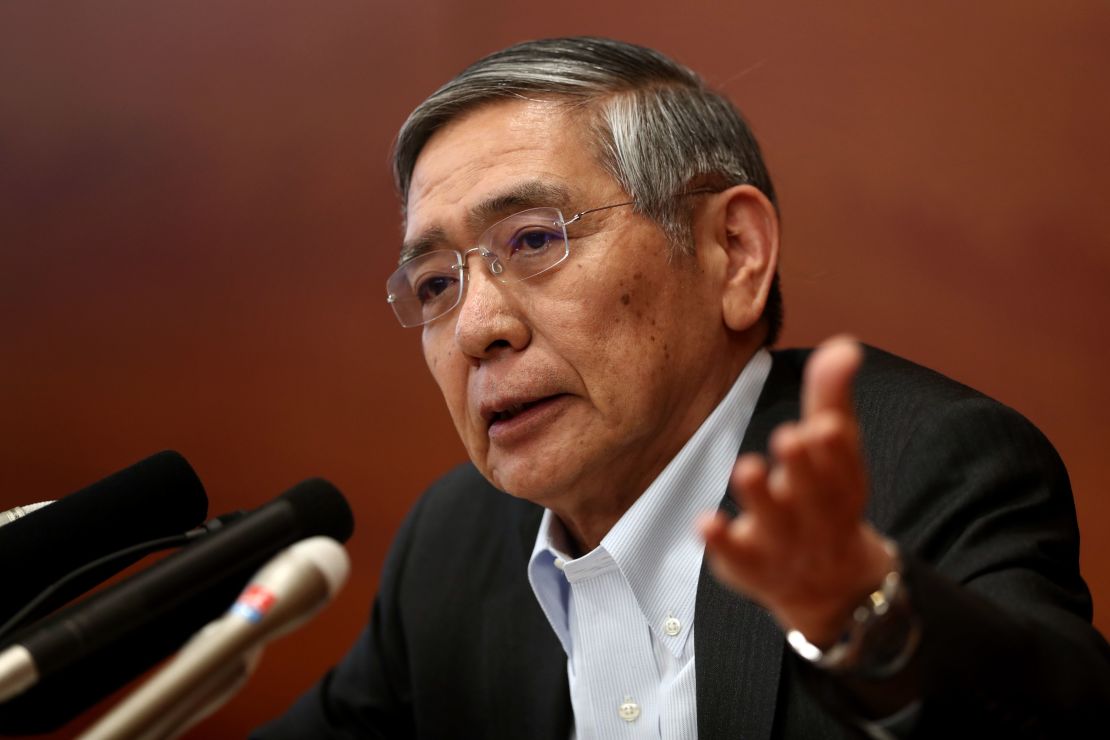An epic bond-buying spree by Japan’s central bank means it’s now sitting on assets worth more than the country’s entire economy.
Data released by the Bank of Japan on Tuesday show that its total holdings stand at 553.6 trillion yen ($4.9 trillion) following years of money printing aimed at jump starting the country’s stagnant economy. That’s bigger than Japan’s annual gross domestic product at the end of the second quarter — and more than five times the size of Apple’s (APPL) market value.
The years of heavy stimulus have warped parts of Japan’s financial markets and left the central bank with dwindling options to juice growth if a new crisis hits. But the splurge is unlikely to end anytime soon.
The Bank of Japan has accumulated most of the enormous stockpile of assets since its governor, Haruhiko Kuroda, embarked on an unprecedented plan in 2013 to buy vast amounts of government bonds. Its goal was to push down interest rates, encouraging consumers and businesses to spend more money.

The move was similar to the extraordinary monetary easing programs launched in the United States and Europe in the aftermath of the global financial crisis. But Japan’s is far greater in scale in relation to the size of its economy.
The US Federal Reserve’s total assets are about one fifth of the size of US GDP, and the European Central Bank’s are around 40% of the eurozone economy.
The Fed announced a halt to its bond-buying spree in 2014 and is now raising interest rates, and the ECB will stop its program next month. But the Bank of Japan’s binge has no end in sight.
Mixed results
Japan recently enjoyed its longest streak of economic growth in decades, but the economy has started to sputter this year. It shrank at an annualized rate of 1.2% in the third quarter, according to government data published Wednesday.
Despite the central bank’s massive asset purchases and other unusual policies like negative interest rates, inflation has stubbornly remained well below the bank’s target of 2%. Kuroda has said the bank won’t consider ending the protracted stimulus effort until that goal is reached.
Risky strategy
But that may be an impossible task, and continuing the stimulus program indefinitely carries significant risks.
“There are limits to how many assets the Bank of Japan can buy,” said Marcel Thieliant, a Japan economist at research firm Capital Economics, because the vast majority of its holdings are in Japanese government bonds, of which there’s a limited supply.
It has already been “significantly” slowing down its purchases of assets and will likely continue to do so, according to Thieliant. That’s not because its plan is succeeding, he said, but because central bank officials are worried its policies are making it too hard for commercial banks to make profits.
Negative interest rates have squeezed their margins, and the huge asset purchases have effectively killed regular trading in the once lucrative bond market.
The Bank of Japan’s ultra-loose monetary policy also leaves it with little in the way of fire power to help prop up the economy in the event of another big crisis.
























